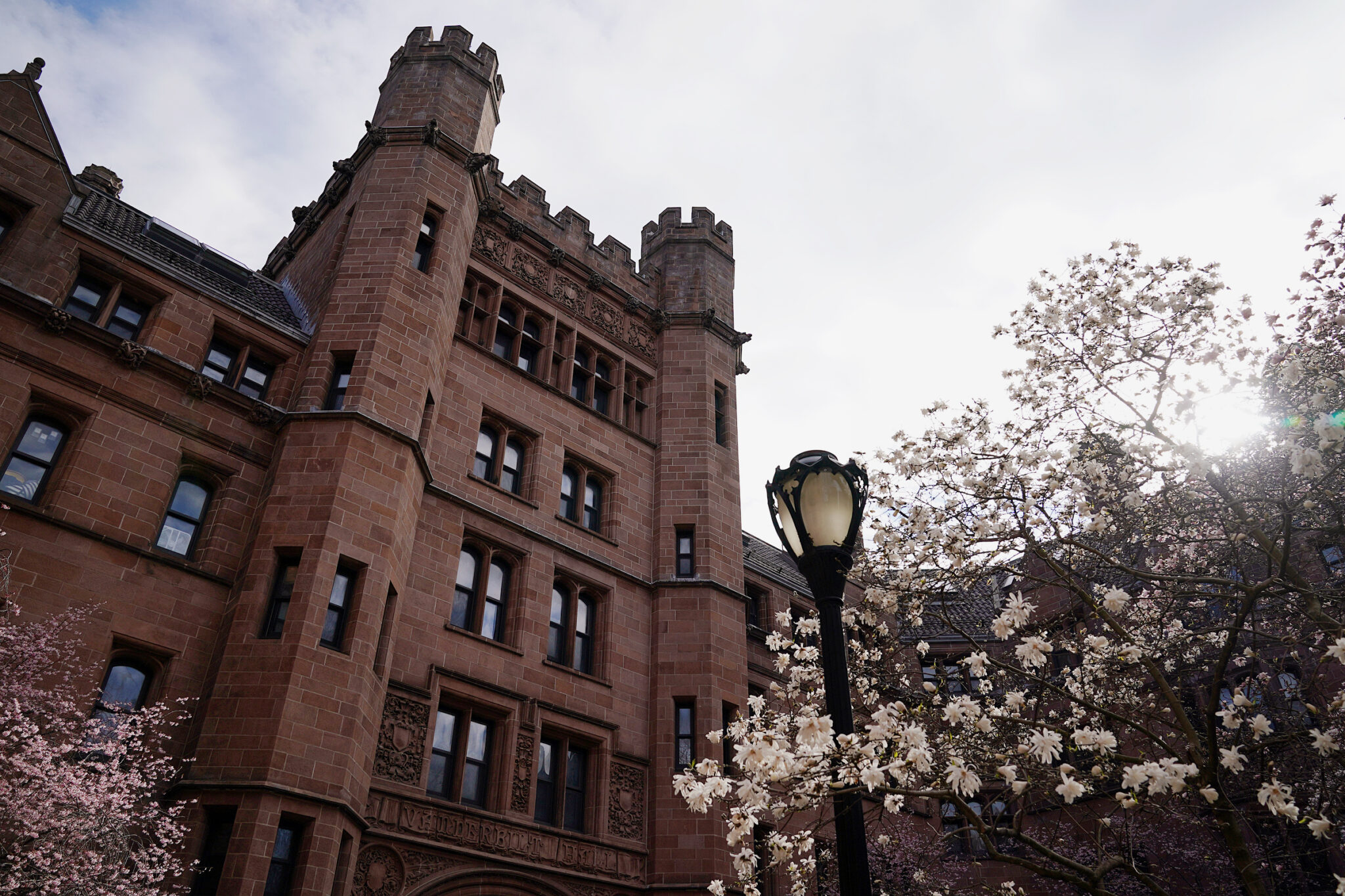University reports record-high ladder faculty headcount
The Faculty of Arts and Sciences and the School of Engineering and Applied Science have reached a total headcount of 721, achieving a goal set over a decade ago.

Tim Tai, Senior Photographer
Yale’s ladder faculty headcount in the Faculty of Arts and Sciences and the School of Engineering and Applied Science has reached a combined total of 721 this year, marking an all-time high.
Each division has also hired in record numbers individually: FAS now has 617 ladder faculty, an increase from 582 last year, while SEAS now has 104 ladder faculty, up from last year’s 95.
“Yale aims to provide students with an education grounded in the tradition of the liberal arts, where they work closely with faculty who stand among the greatest thinkers in the world,” FAS Dean Tamar Gendler told the News. “Bringing the number of FAS and SEAS ladder faculty to 700+ allows us to fulfill this mission at a moment when Yale’s undergraduate enrollment numbers are at a record high.”
Indeed, recent hires have coincided with the matriculation of one of the largest classes in Yale College history: the class of 2027 is 1,647 students strong, and it has brought the College’s total enrollment to historic heights.
The term “ladder faculty” refers to faculty members who are either tenured or on the track to receiving tenure. The size of the FAS, which used to include SEAS until it became a standalone school in July 2022, had hovered around 700 until 2010. Ladder faculty numbers dipped below that mark in 2011 as a consequence of the Great Recession, which caused the value of Yale’s endowment to fall by 25 percent at the time.
Since their dip in 2011, ladder faculty numbers were around 680 until this year’s record boost in hiring, which saw 39 new faculty members join the FAS for a net increase of 24 ladder faculty members, the University’s largest ever. The number of FAS and SEAS senior departures in 2022-2023 was the lowest since 2009.
Humanities, one of three subdivisions in the FAS, recorded the highest number of new additions with 25 new hires. Within the Humanities division, African American Studies, Classics, English and Spanish and Portuguese are receiving the biggest boosts, each gaining three new ladder faculty members.
The Social Science subdivision is bringing in 17 new faculty members, including six in the Statistics and Data Science department, which has received elevated interest from undergraduate students over the past five years.
The sciences, the third subdivision of FAS, is taking on 11 new faculty, with four in the Physics department alone.
“Each faculty member represents an area of expertise, a methodological specialization, a particular way to understand the world, or a unique set of life experiences,” Gendler said. “A strong faculty enables us to advance knowledge in areas that few other institutions can; and to do so at the highest level of excellence.”
Gendler noted that the current target number is at least 637 ladder faculty members in the FAS.
Meg Urry, Director for the Yale Center for Astronomy and Astrophysics and the chair of the FAS-SEAS senate, said that since the ranks of the University’s FAS and SEAS faculty have remained “pretty flat” since the Great Recession, she is “happy” to see the overall size increase. However, she noted that the increase of 9 percent since 2017 still lags behind the 15 percent contemporaneous growth in the undergraduate population.
“To provide the kind of undergraduate education Yale is known for, rich with seminar classes and hands-on research experiences, requires low student-to-faculty ratios, meaning that as the undergraduate classes grow, the faculty must grow as well,” Urry said. “Hiring new faculty also brings new energy and ideas to campus, which strengthens our intellectual environment.”
Last week, Yale College Dean Pericles Lewis told the News that, from an admissions standpoint, adaptations may be necessary to reduce the undergraduate student population to a more manageable long-term state, noting that the University would “just admit fewer students.”
But Lewis told the News that changes in undergraduate class size do not necessarily require commensurate changes in the size of Yale’s faculty.
“We don’t hire faculty based just on undergraduate enrollments by any means, because it’s also graduate programs and research interests that people have,” Lewis said. “So a lot of people spend some practical time teaching graduate students, and so we don’t allocate a new position based on how many enrollments there are.”
Lewis also explained that the demand for faculty is not always to increase the number of courses offered, but also sometimes to support areas like increased demand for certain senior essay topics.
He added, however, that some recent hires were the direct result of understaffing in the Computer Science department.
According to Gendler, Yale looks to maintain a 75-25 ratio of ladder to non-ladder faculty.
To maintain this ratio, two-thirds of new faculty are hired at the untenured level and roughly one-third at the tenured level. These tenured hires are usually people who obtained their PhD degree more than 10 years ago and have spent time teaching at another institution.
Gendler added that most ladder faculty spend only a fifth of their career untenured, enjoying tenure status for most of their time teaching.
“Faculty hiring at Yale is extremely selective,” Gendler wrote. “We are only permitted to hire as ladder faculty those who stand among the foremost leaders in the world in a broad field of knowledge, whose work significantly extends the horizons of their disciplines, and who manifest excellence in teaching and mentorship.”
The notably large class of 2027 is due to a historically high 72 percent yield rate.







